

| THE LAST LIVING O.G. BUGERA 333XL All the Things I've Learned Using my first Tube Amp |
||||||||||||||||||||||||||
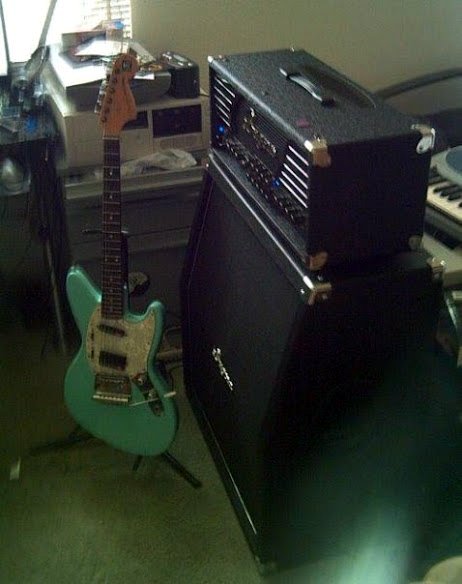 In 2008 I went out one day, bored as fuck, to get a date, or join a band. I wound up in a guitar duo with this older guy who worked at Kennelly Keys. Around this time, Behringer, unbeknownst to me, was starting their first line of "Booteek" Tube Amps - Bugera. In 2008 I went out one day, bored as fuck, to get a date, or join a band. I wound up in a guitar duo with this older guy who worked at Kennelly Keys. Around this time, Behringer, unbeknownst to me, was starting their first line of "Booteek" Tube Amps - Bugera.
Anyway, this guy calls me up out of the blue one day and says "I think there's an amp here you might like" and it turns out it's this exact amp. The Bugera 333XL was one in a line of several "copy" amplifiers released by Behringer in 2008. There were the following models at the time....
These amps were a little different when they came out. Since then, starting about 2011 or so, Bugera created a self-biasing technology of some sort that allowed you to know when to replace failed tubes and would keep a proper bias on the tubes automatically. This ain't the line of amps we're talking about here. My amp is PRE-Infineum. 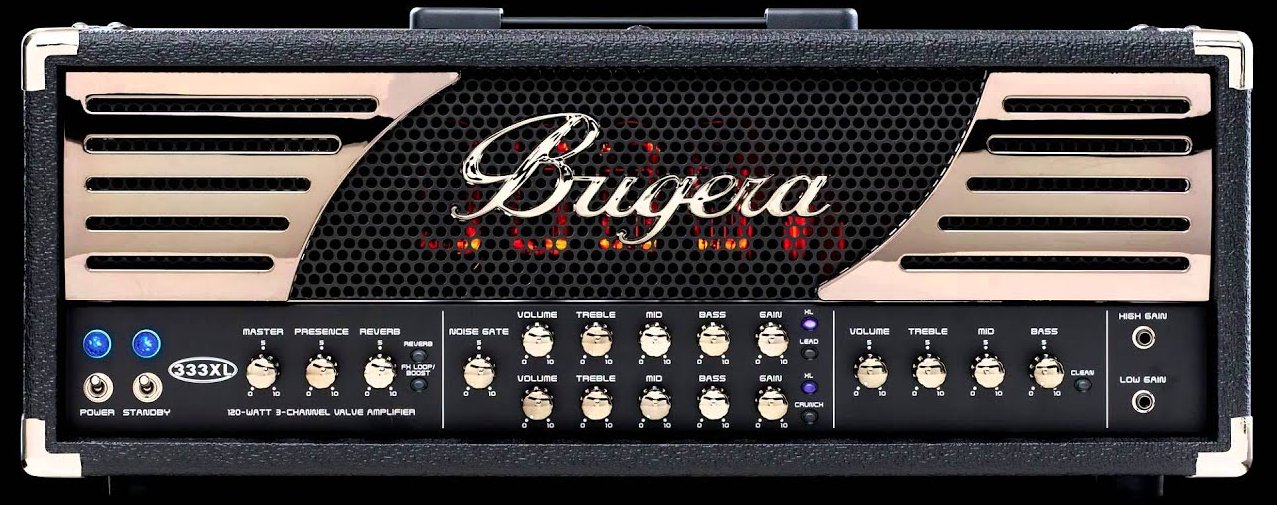
The 333XL in detail, is a 3 channel, 120 Watt, all tube head, with 12AX7s in the Preamp section, and EL34s stock in the Power amp section (though you can switch it to 6l6s). It has footswitchable channels, and a footswitchable Effects Loop, but no footswitchable reverb, which is fully digital and stays on whatever channel you have it active on until you turn the amplifier off. After years of struggling with digital effects through low-headroom transistor amplifiers by the likes of Peavey mostly, I'd decided to give this a try. It had the tone I wanted, something Marshally, but not totally, and not a Marshall. It had 3 channels (I'll mention my use case later), it was 120watts - which was way more than I need, but a high headroom clean channel. What I was looking for, was an amplifier that could emulate a Twin, a JCM800, and a Midrangey version of a Mesa Boogie, all in one amplifier. For cleans, high headroom is it, I have had this thing all the way up before, and it does not break up like a vintage Marshall at all on the clean channel, it stays very pristine, like the Fender Twin Reverb is described to be. This is perfect. It even stays really clean with a high output humbucker slamming the front end, even Nikki's over-blown EMG. I use crunch for highoutput humbuckers, or more "traditional" overdriven tones with single coils - think old school Tom Petty on that last one. It breaks up like an old Marshall, has a nice chunk to it, is not overly gainy, the XL switch adds some fatness, but not so much that it drowns out the mids, and I can tame the treble just right to get a really nice tone out of it, as the 333XL has an "active" EQ circuit. So I usually start with all knobs midway, and then bump the lows and mids up, and leave treble halfway, or bump it up. The Lead Channel, though intended for lead guitar, I just use it as a boosted crunch channel for my single coil guitars, so I can get the single coil spank withan almost humbucker like growl. Why do I use it this way....well.... The Bugera has an Effects Loop on it that has adjustable send and return. It seems, this FX loop adds a boost to your signal. Since I put nothing in it anyway, that's what it is, just a small, 3db volume boost for solos on ANY channel - which is all I need since I'm typically the lead guitarist in most band scenarios. But this isn't about the player, this is about learning Tube Amps from the perspective of a guy born in 1983.WAIT!!!! Before We Begin, let's have a quick...uh...SAFETY DISCLAIMER!!!
Why Bugera 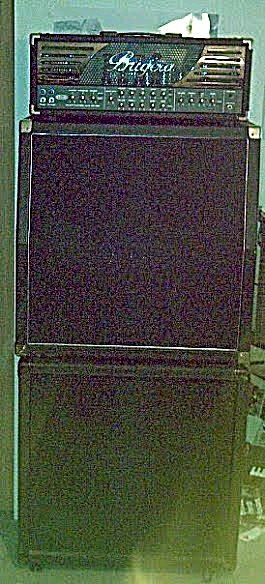 The simple reason was because it had the sound I wanted, and was affordable. Not cheap, these amps retailed new for around $500-700, a new 333XL Infineum is almost $800. For the full rig I bought, which was this 333XL 120 Watt Head, and a Bugera slanted front cabinet (which I got a bit scammed on by my own guitarist, he kept talking about how it's easy to move around due to tilting it sideways....forgetting that Marshall, Peavey, Laney, Carvin, Mesa Boogie, and others all had amps with FOUR 360 swivel castors on them). Since then, thankfully, I've gotten better street smarts, but I did not buy the setup because of the cab, I bought it because of the AMP.
The simple reason was because it had the sound I wanted, and was affordable. Not cheap, these amps retailed new for around $500-700, a new 333XL Infineum is almost $800. For the full rig I bought, which was this 333XL 120 Watt Head, and a Bugera slanted front cabinet (which I got a bit scammed on by my own guitarist, he kept talking about how it's easy to move around due to tilting it sideways....forgetting that Marshall, Peavey, Laney, Carvin, Mesa Boogie, and others all had amps with FOUR 360 swivel castors on them). Since then, thankfully, I've gotten better street smarts, but I did not buy the setup because of the cab, I bought it because of the AMP.
Later I bought a Peavey VTM Series cabinet for $114 at a pawn shop, already beaten up. For all I know, Kim Thayil (Soundgarden - I lived 15 minutes north of Seattle at the time) could have owned that thing before me, since I know he used VTM-120 heads (not sure if he used the cabs though). Fun thought but am in no way saying it's one of his. That started off as the "Bottom" for a full stack setup (right) - which I briefly used in Smokin' 66 at rehearsals. I never took it out for a live show though. At those rehearsals, the Bugera was run at "5" on the master and was RIPPING LOUD. Running a EHX PolyChorus through it made it my god-tier live rig, especially in that setup. I remember driving home from rehearsal several times thinking I'd given myself permanant tinnitus. Sometime later I experimented with a Stereo rig with a Fender M-80 solid state on the other side. The M-80 was my backup for the 333XL but I never had to use it by that point because I'd had the technicals worked out. The bugera has actually had TWO backups. A very clean Crate GT-1200H with footswitch, and later the Fender M-80. The M-80 was left with Zombie Jihad when I left. because relations between me and Kenan had soured enough to that point that I decided I'd rather not have to listen to him anymore and lose an amp. Sometimes I wished I'd kept the M80, but overall, I liked the 333XL a lot better in general, and it fits my use case a lot better than te M-80 did being 3-channels and all. Overall Technical Assessment - a Guide to the Innards 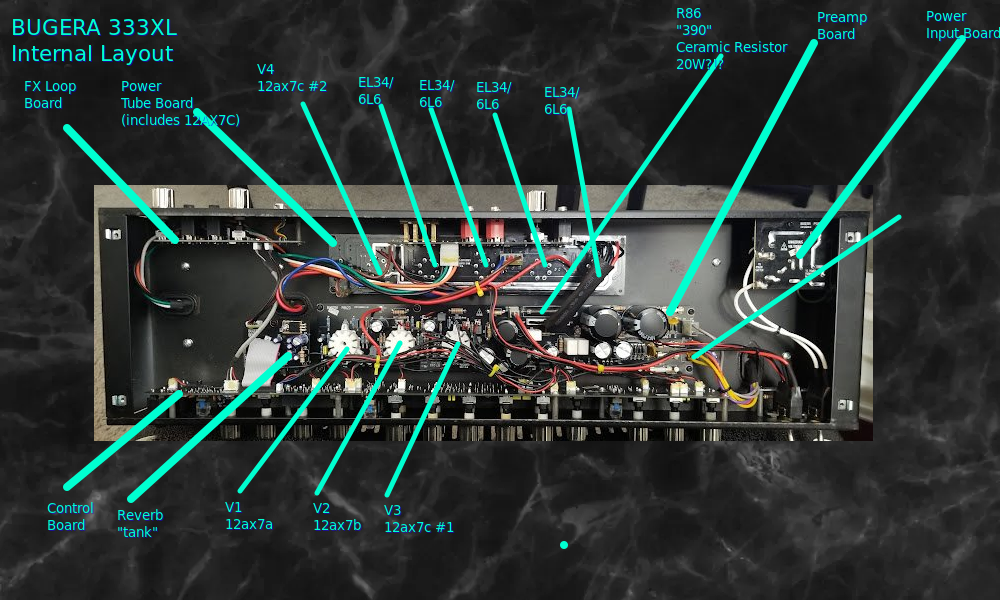
As we can see, the inside of the pre-infineum Bugera 333XLs is built like a modern transistor amplifier largely - kind of like a computer. Each "section" of the circuit attaches to a specific board. Let's start with the most obvious - tubes. The stock Bugera 333XLs shipped with a quartet of matched Bugera-branded (most likely Tung-Sol made) Tubes. This included 4 EL34s in the output section, and then 4 12ax7's labeled 12ax7a, 12ax7b, and then two 12ax7c tubes. The 12ax7's are under spring loaded metal retainer caps, while the EL34s are supported by v-shaped friction brackets on each side. We will talk about the critiques about the factory bias method vs. the REAL way to bias a tube amplifier in the "biasing" section. Next of course, are the boards those tubes attach to. The most infamous of these being the Preamp Board. The power transformer attaches to the Preamp Board (the Power Transformer would be the group of wires coming from the right side of the picture) originally via a plastic clip that would melt. I will cover this problem in the Infamous Burning Power Connection Problem section. The board is marked X33 and has a 5P mark next to it. And the wires from top to bottom inthe picture are Orange, Purple, Orange, Yellow, Yellow. Above this is another clip with 2 grey wires that never burns up. There's also 4 fuses to check near this connector as well, though I have to question their effectiveness. It seems EVERY section of the 333XL takes power from this board. The Power Amp board can have cold solder joints though I got lucky and mine does not have any still somehow as of the last time I opened it up. It seems this section takes power from the previous board actually, because the #1 sign of the burned up clip issue is the filaments in the power tubes no longer light up. The Control Board is the longest board in the unit, and uses some SMD (Surface Mount Devices - ie - the Resistors/Capacitors/LEDs/etc. are all soldered on the same side of the board as the component attaches to). This is where the volume, tone, switching, controls, and other stuff are all installed at. Problem #1 - That infamous Clip Issue 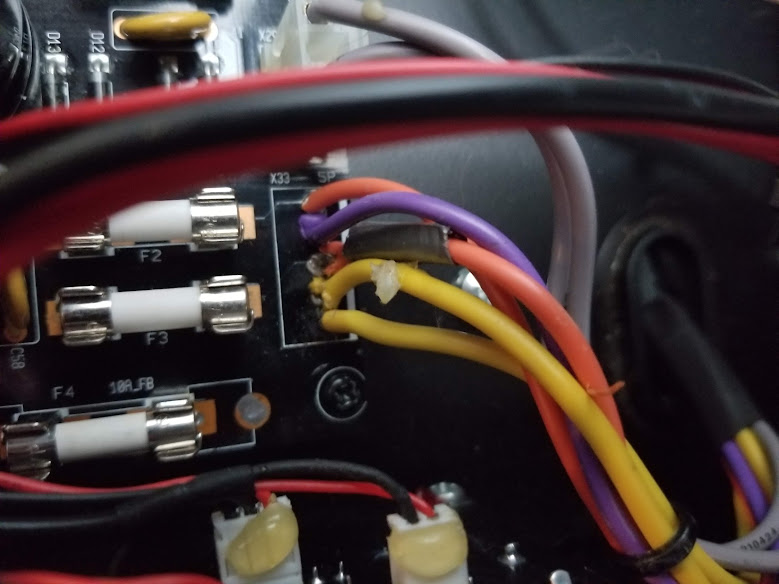 When the Bugera 333XL first came out in very very late 2007 (around December) or early 2008, the power distribution was connected to this point (orange/purple/orange/yellow/yellow wires on the right side of the picture) with a nylon molex clip. While this made assembly easy, the cheap, Chinese construction quality of this connection lead to the connector getting very hot, and melting, as the tolerances were just not good enough or tight enough for a connection delivering voltages up to or even maybe over 500VDC. That's a lot of juice flowing through that connector. When the Bugera 333XL first came out in very very late 2007 (around December) or early 2008, the power distribution was connected to this point (orange/purple/orange/yellow/yellow wires on the right side of the picture) with a nylon molex clip. While this made assembly easy, the cheap, Chinese construction quality of this connection lead to the connector getting very hot, and melting, as the tolerances were just not good enough or tight enough for a connection delivering voltages up to or even maybe over 500VDC. That's a lot of juice flowing through that connector.
It seems on average, most 333XL owners started to have problems with this connector between two and six months. On mine, it lasted about six or eight months before it melted, and I don't think this really became much of an issue until I started gigging the amplifier almost every weekend, sometimes 2-times a week playing shows with Smokin' 66. I noticed something was off already when it seemed every single night I has having wide variations in volume and tonal changes. The issue came to a head at a crappy gig at Hayley's bar (what was once Johnny Z's previously) where only 2 people showed up the whole night, and the entire show saw me kicking, hitting, throwing, and getting pretty mad at the amp. It kept cutting out. It was thought, at first that the problem was the speaker connector. I think what made me the most mad was knowing the amp might not have had a proper load on it and I might have been frying my output transformer in the process due to a bad cable. I spent the early morning hours after on the internet researching WHY this kept happening, and I NEEDED the amp working because I had rehearsal and another gig within a few days. Bugera offered to have me ship it in, but I would not have an amp, and I NEEDED to be able to continue performing live with this group, as the Mesa Boogie Stilleto Todd had was sold already, and I knew nobody with an amp I could borrow. So I took matters into my own hands, voiding any warranty, I pulled out the amp and the problem was immediatley obvious.
To fix the problems with the cabling, I switched from using First Act cables from Wal-Mart, to using Monster Cables at the time. I spent about $70 total and had Monster-Cables for everything - input, pedalboard to amp, and then the amp to the cabinet. I had to revisit this issue again years later when I was heavily gigging with Zombie Jihad. Turns out, once again, those damn wires started heading up and loosening the Solder. So I ran wire along the traces to act as sort of a heat-sink of sorts, and it seems to have worked. The amp has been really quiet as far as unwanted noises ever since, but been extremely loud and powerful. I may have to revisit it though since I've had more recent issues. #2 - Power Tube Biasing Hijinks 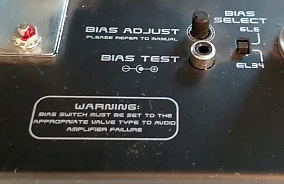 The default BIAS test point on the Bugera 333XL is a RCA style jack located to the left of the 4th preamp-tube (12ax7c), which also includes a switch marked 6L6/EL34 for changing Bias Voltage and Current for the tubes (6L6's use a lower voltage than the EL34s do), a tiny trimpot for adjusting the Bias, and the RCA jack was designed to attach a multimeter (or precariously hold Multimeter test leads to). The default BIAS test point on the Bugera 333XL is a RCA style jack located to the left of the 4th preamp-tube (12ax7c), which also includes a switch marked 6L6/EL34 for changing Bias Voltage and Current for the tubes (6L6's use a lower voltage than the EL34s do), a tiny trimpot for adjusting the Bias, and the RCA jack was designed to attach a multimeter (or precariously hold Multimeter test leads to).
That was a feature Bugera lifted from Peavey - as the 333 is a clone of Peavey's XXX amplifier, and the 333XL is a clone of the JSX Joe Satriani model of the XXX. See resemblance below... 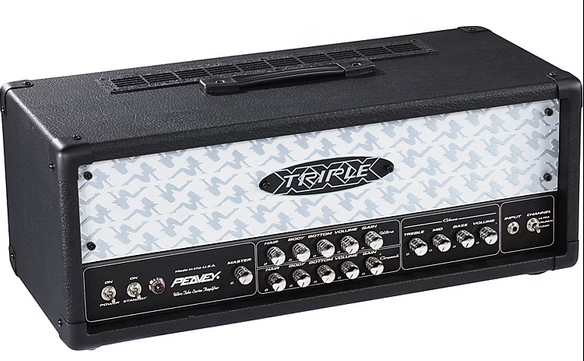
 The Peavey XXX (left), and Peavey JSX (right), were 3 channel, 120 Watt, Tube-based amp heads created by Peavey sometime in the 2000's. They feature all the same features as the Bugera 333 and 333XL respectively.
So how was one supposed to use this test point? Well....Bugera had this clever idea that you'd use the factory test point to pull the voltage of the tubes in the 200 volts Direct Current (VDC) range, with the postive lead in the center of the RCA jack, and the negative lead on the sleeve of the RCA jack (factory test point), after looking at the center pin on the bottom of the tubes that had a letter stamped on it at the factory after matching. The problem is this - according to multiple amp techs I've talked to, tube vendors and their websites, as well as YouTube videos, amplifier forums, guitar forums, anywhere else I've read - this is a terribly bad way to set the bias on an amplifier. That said, I'm not 100% it's as bad as they said, I got 15 years out of my original set of Bugera tubes, and burned up a set of Mullards once in about six-eight months using a Eurotubes basic "bias probe", and I used this biasing method on the 333XL the whole time. I was running a "G" graded set of Bugera-branded EL34 tubes at 44.7 bias voltage, with, when testing, around 460vdc plate voltage, and a current draw of around 32-40ma per tube.
Another challenge is the damn multimeter itself..... 
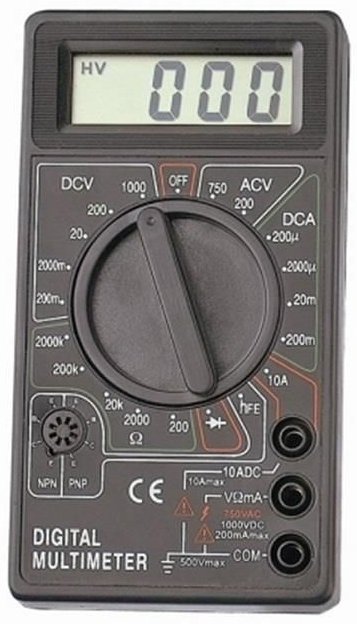

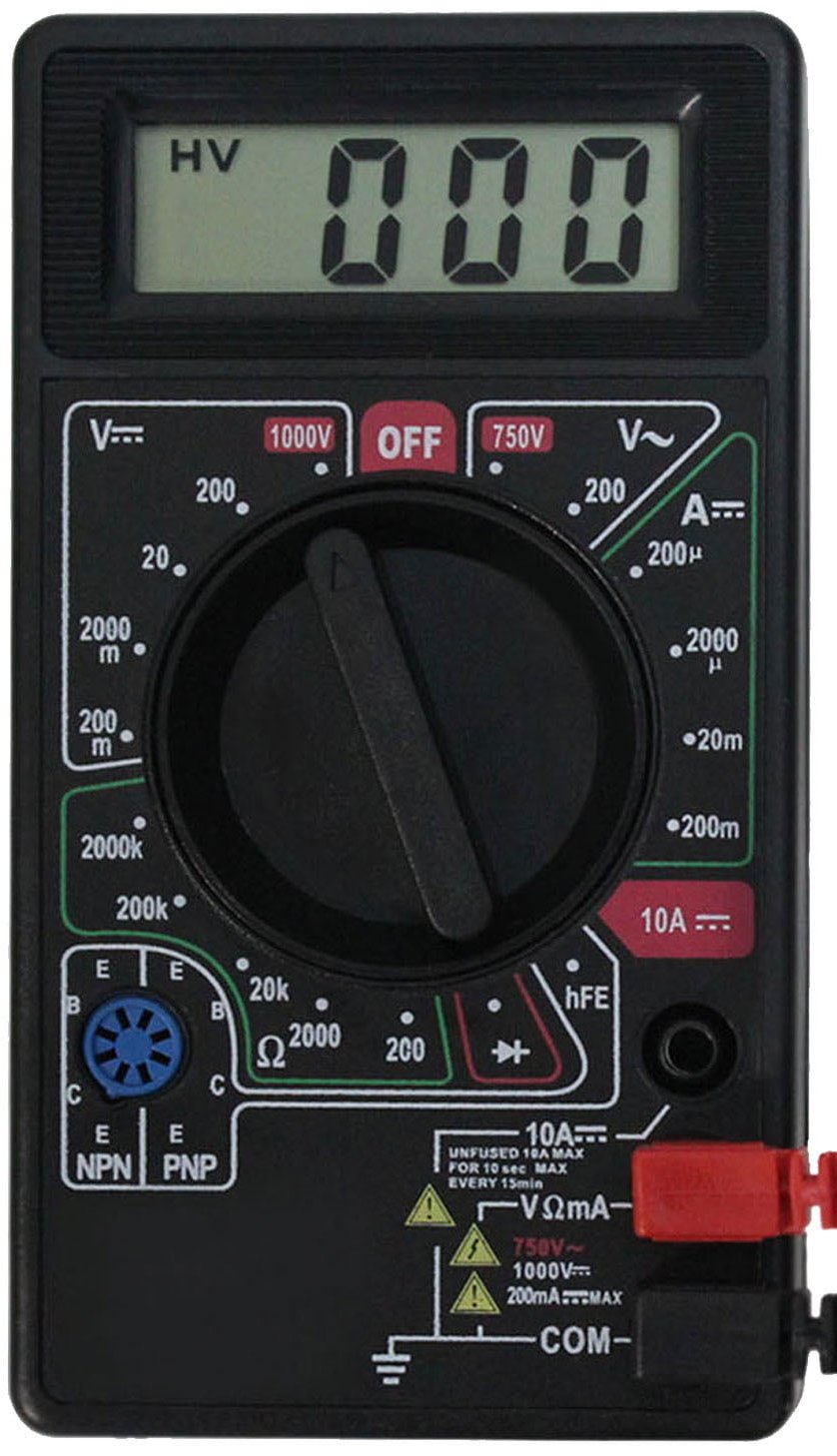
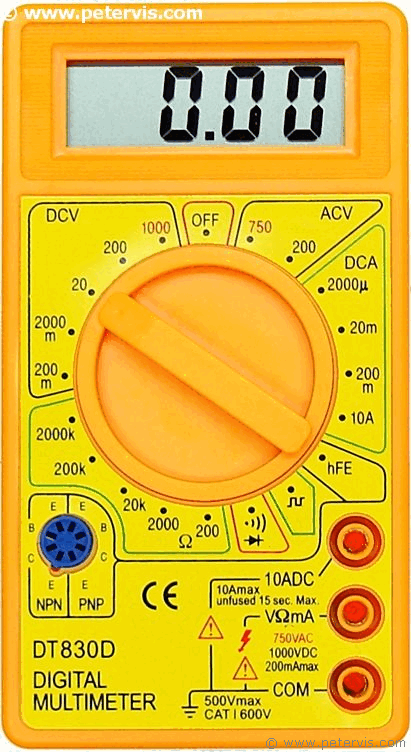
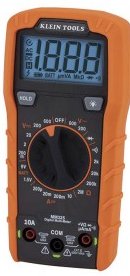 Above is a show of pretty-much all of the Multimeters I've owned starting with the first in 1997 I've never used for Tube Amps...bought at a weird local-chain hardware store on Frederick road in Auburn, all the way to my most recent, a $35.00 Klien Tools model from Home Depot. #3 and the most recent seem to be the best of them. This is how I must stress how important it is to have a GOOD multimeter. Not an analog piece of crap, not one of those cheap crappy meters you can buy at the Dollar Store (like the yellow one second from the right above), but something that truly is designed and built to handle the voltages and amperages found in a Tube Amp. Honestly, my main meter for amplifier use was the yellow "E" branded meter from Wal-Mart in the middle, which is what I used through the Smokin' 66' era, and now the Klien Tools model on the far right which I bought just recently in 2024 (what, you thought these pages came from nowhere...yes, I've bene "Wrenchin'" on the ol' Bugera recently). So far the Klien has been the best so far. I bought it to replace the second to the right (DT830) because that stupid thing was giving inaccurate results from the power tubes.....seriously, comparing my measurements with the DT830 to the Klien is like night and day. I could not even get a plate amperage rating worth a damn out out of the thing (if any at all). I had the same exact problems with the Bugera with the 2 black ones above - one of which was an earlier version of that DT830 unit (minus the whole Transistor HFE test thing). So let's talk about info you need to know. One thing you need to know is the "Class" of circuit the amplifier is. Most guitar amps are "Class A", "Class AB", or "Class D" (the last is most Transistor/Solid State amps) - for the sake of brievity, I'll just reveal, the Bugera 333XL is a Class AB amplifier. The next thing we need to know, is what the plate voltage are for the tubes you're using. For a 120 Watt amplifier like the Bugera 333XL - the acceptable range is between 368vdc to 500vdc for a set of EL34s. This is pulled with the bias probe using the meter on the 600vdc range setting. This last time I pulled these - it was around 460vdc for each tube plate voltage according to the meter, with the lowest being around 457 and the highest being 467. We also need to know plate current for the tubes you are using as well. On a Bugera 333XL, this can range all the way from around 30ma-40ma (milliamps) if equipped with EL34s. The plate currents I happened to be pulling were between as low as 27ma all the way to 42ma. Since I'm not the greatest mathmatical wizard on earth, I used some online calculators to show some actual values from my own amplifier here. Here's the calculators I've used and my thoughts on them....
Anyway, on the original run of bias settings, I had this.....(old tubes)....facing the back of the Bugera....
Okay, so the "bias" is the plate current - that's the numbers between 25-40mA that we see above are. When we increase the Bias - ie make it "hotter" - the plate voltage for the tube(s) drops. If we turn the "bias" down (to the left on the dial - facing the back of the amp), then the plate voltage goes up, and the plate current drops - making the bias "colder". One other thing to learn about, is the tubes you have. I use EL34s. I've had four sets so far, I now remember, I did replace the original set at some point in the last 10 years with another set of "G" Grade Bugera tubes I got on e-bay. Most accounts are around 450vDC for the plate, and the plate current (Bias) generally seems to fluctuate between 30mA and 40mA for most applications in guitar amps from what I've read. As you can see, the last two tubes look like they are pretty well biased - they're pretty close to each other in plate volage and current. I think the 2nd closest to the left was the tube that eventually failed and resulted in no sound, and the one next to it is a little outta' spec as well. It seems though, based on the figures of 2 sets of tubes, the Bugera really likes the 450-470 plate voltage range with a bias around 32-38mA most of the time - so if you're totally clueless, those are good figures to try with, but YMMV. Some notes on AUDIO when biasing, because there were times, playing live music, if I did not have time to bias before the show, I'd usually just make sure the tubes were pushed down all the way once on stage, and then if I really had to, I could kind of hear it. Typically, hotter biased tubes will sound warm, thick, and sounds louder, while colder bias can cause some distortion, and make the amp sound dull, and loses some low end. I also notice it makes the amplifier hum a little less. I found the nights I took more care about the tubes, the happier the amp was, and the happier I was with the sound that night. I really like the bias on the 333XL somewhere right in the middle - "just right" - when it's there, I have a lot of headroom when clean, and BRUTAL grinding distortion when distorted that has a very thick low end. It seems this sits with a plate current of between 32ma with a max of about 40ma. Currently I have it set at about 35ma. That said, as of writing this section (4/4/2024) - I'm still chasing some weirdness with volume. So we'll talk a little bit more about preamp tubes and other stuff later on.#4 - The Footswitch 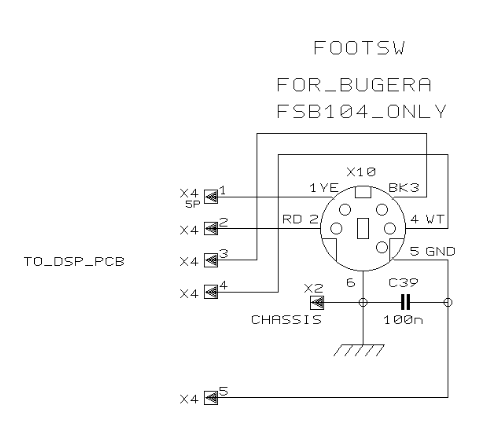 One of the most annoying problems I've had with teh 333XL is the bloody footswitch. The 333XL, stock, takes an FSB104B footswitch, which provides switching between clean, crunch, and lead channels, and turning the Effects Loop on and off (ie aforementioned loop I use as a lead boost for solos). Unfortunatley, no switch for Reverb - though I have an idea how to hack one in, especially with my present footswitch setup that's DB-9 based.
One of the most annoying problems I've had with teh 333XL is the bloody footswitch. The 333XL, stock, takes an FSB104B footswitch, which provides switching between clean, crunch, and lead channels, and turning the Effects Loop on and off (ie aforementioned loop I use as a lead boost for solos). Unfortunatley, no switch for Reverb - though I have an idea how to hack one in, especially with my present footswitch setup that's DB-9 based.
Basically, the wires work like this.....
However, there's more to it than that. I will dig into this section a little more deeply later once I've schemed out the FS104B Footswitch for amp (especially since I might be designing my own newer jack method that looks a lot better than the mess it's setup as currently). Eventually I want to maybe find another method of adding a REVERB to the footswitch....and maybe change my footswitch into a "foot-bar" with PTP wiring with actual heavy duty footswitches that will fit on my pedalboard without taking up much space (not to mention make it waterproof). #5 Bad Solder Joint  What kind of lead to this page, was I was getting sort of a blatty, sustain-less sound from the amp at the beginning of 2024. Being as I was working on a lot of guitar builds around this time and was using the Bugera to test them out in my garage, I needed the amp to be functional (esp since my Blackstar is working as a leg for my couch I need to fix). So the repair lead me down the rabbit-hole of re-biasing, finding out I had a bad tube in my replacement set, and all kinds of madness. Checking my previous solder joints, they were all solid, but while poking around inside the amplifier, I found the two large capacitors on the preamp board - out of those two, one was loose and wobbly.
What kind of lead to this page, was I was getting sort of a blatty, sustain-less sound from the amp at the beginning of 2024. Being as I was working on a lot of guitar builds around this time and was using the Bugera to test them out in my garage, I needed the amp to be functional (esp since my Blackstar is working as a leg for my couch I need to fix). So the repair lead me down the rabbit-hole of re-biasing, finding out I had a bad tube in my replacement set, and all kinds of madness. Checking my previous solder joints, they were all solid, but while poking around inside the amplifier, I found the two large capacitors on the preamp board - out of those two, one was loose and wobbly.
What I found underneath was a bad solder joint for one of the high voltage capacitors that I believe actually feeds power to the power tube board, which is why my power tubes were acting stupid. I confirmed this by plugging into the FX Loop on the return side, and turning on the FX loop, and found that I was still getting the same terrible sound as before from the power-amp section. To fix the solder joint was pretty easy, just unscrew about 7 different screws holding on the preamp board, and then wiggle the capacitor to confirm the loose joint. After that, I heated up the solder, and let it take some time to melt back in, ended up with a nice, strong, solder joint. While I was in there, I decided to discharge them, but it seems that the caps discharge when the amp is powered off (that's why it takes so long for that damn light to turn off from Standby methinks). I also touched up the one next to it to make sure. Sure enough, when I put the amplifier back together, it was sounding and playing great again. However, we will discuss the future of the amp in the next section... #6 - Bugera's Tubes When I first Bought this 333XL in 2008, Bugera sold graded tubes for their amplifiers that you'd use the plate voltage to adjust based on a guide in the owner's manual. This has since been said to not be an optimal method of biasing the tubes. But another thing that came to pass in this whole sea of shennanigans, was when I took a newer set of Bugera tubes that I had and tried them out. I found a few things that were a big turn-off. First off, there was one "bad" tube in the lot. The filament was lighting up, but the tube was not giving me any readings for voltage or plate current at all using the test probe. The other part is it seems there's still some sort of grading system going on as each tube had a colored sticker on it, 2 had yellow, 2 had orange. I also noticed the tubes had smaller glass, like a set of Mullards I had years ago that burned up while rehearsing. I noticed they did not sound as good as the new ones, even when properly biased, and because of the one bad tube, getting them biased right was impossible anyway. So now I'm kinda' wondering what to do in the future, what brand to go with, or what resource to use. So that might be something we shall explore next on this page, another brand's tubes. I'm seriously toying with JJs through Eurotubes, and maybe try and fit some "big bottle" 6CA7s like Eddie Van-Halen was running in the "magic Marshall" back in the 70's (and maybe add a fan to it as well). |